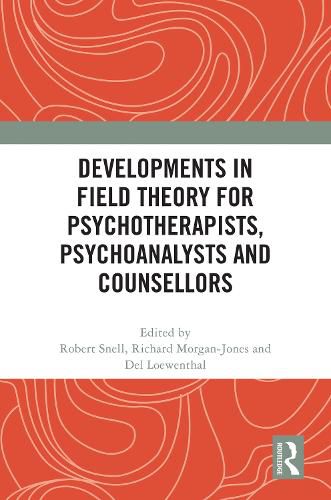Readings Newsletter
Become a Readings Member to make your shopping experience even easier.
Sign in or sign up for free!
You’re not far away from qualifying for FREE standard shipping within Australia
You’ve qualified for FREE standard shipping within Australia
The cart is loading…






This book explores developments in psychoanalytic field theory internationally, and their relevance for therapeutic theory and practice.
The roots of psychoanalytic field theory can be traced back to the work of Kurt Lewin, and it has taken particular shape in the hands of the Barangers, Bion and Ferro. The book's focus is on developments in field theory post-Bion ('Post-Bionian Field Theory') in Italy, with contributions from Brazil, Serbia and the USA, in the form of chapters by Boffito, Civitarese, Fagundes, Levine, Mazzacane, Mojovic, Morgan-Jones and Snell and Penna and Hopper.
Among the themes the book explores are the transformative potentials of play and the centrality of dreaming. The book is informed by a psychoanalysis not so much of decoding and archeological uncovering as one of being and becoming, within a shared 'field' in which therapist and patient are partners in creating, exploring and developing. The chapter by Mojovic and the commentary by Penna and Hopper extend the use of field theory: in other historical and geographical developments field theory and group analysis have productively been brought together, notably in Argentina where the two are most closely linked.
This book will be essential reading for students and scholars of Psychology and Psychotherapy interested in field theory and contemporary psychoanalysis. The chapters in this book were originally published as a special issue of European Journal of Psychotherapy and Counselling.
$9.00 standard shipping within Australia
FREE standard shipping within Australia for orders over $100.00
Express & International shipping calculated at checkout
This book explores developments in psychoanalytic field theory internationally, and their relevance for therapeutic theory and practice.
The roots of psychoanalytic field theory can be traced back to the work of Kurt Lewin, and it has taken particular shape in the hands of the Barangers, Bion and Ferro. The book's focus is on developments in field theory post-Bion ('Post-Bionian Field Theory') in Italy, with contributions from Brazil, Serbia and the USA, in the form of chapters by Boffito, Civitarese, Fagundes, Levine, Mazzacane, Mojovic, Morgan-Jones and Snell and Penna and Hopper.
Among the themes the book explores are the transformative potentials of play and the centrality of dreaming. The book is informed by a psychoanalysis not so much of decoding and archeological uncovering as one of being and becoming, within a shared 'field' in which therapist and patient are partners in creating, exploring and developing. The chapter by Mojovic and the commentary by Penna and Hopper extend the use of field theory: in other historical and geographical developments field theory and group analysis have productively been brought together, notably in Argentina where the two are most closely linked.
This book will be essential reading for students and scholars of Psychology and Psychotherapy interested in field theory and contemporary psychoanalysis. The chapters in this book were originally published as a special issue of European Journal of Psychotherapy and Counselling.